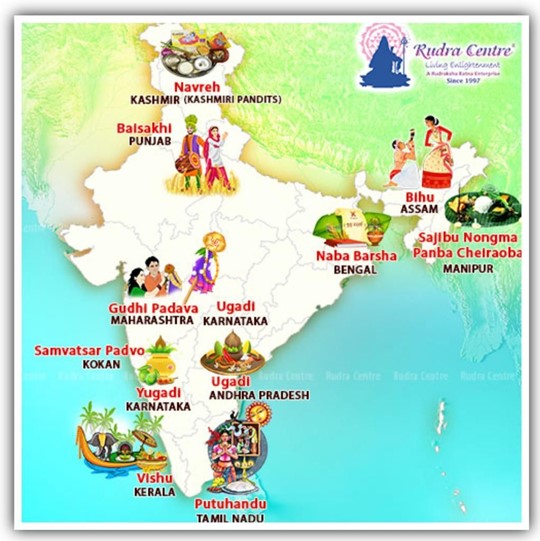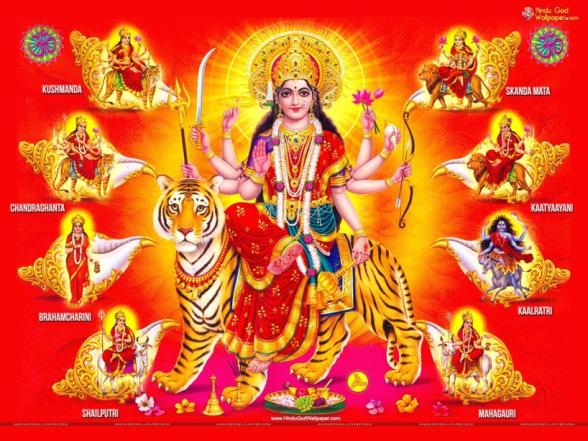
Archives
Contribute
| Significance Of Chaitra Navratri |
Jaya Asthana
04/11/2024
CHAITRA NAVRATRI Navratri is celebrated across the nation with great fervor and enthusiasm. When we think of Navratri, most people know of two Navratis. However not many know that Navratri is celebrated in different seasons, four times a year. They are Chaitra Navratri, Ashadh Navratri, Sharad Navratri, and Magh Navratri. Of these, the Sharad Navratri and the Chaitra Navratri are most well-known. Chaitra Navratri is also known as the Vasant Navratri. It usually falls in the Gregorian month of March or April and marks the first day of the Hindu calendar. It is a nine-day festival celebrated with great enthusiasm. Navratri is celebrated on Pratipada (first) day during the shukla paksha of Chaitra maasa (month), which is between March and April. This is known by different names in different regions of India. Maharashtrians celebrate the first day of this Navratri as Gudi Padwa, in Kashmir it is called Navreh, in Andhra, Karnataka and several Southern states it is Ugadi, in Assam it is Bihu. Whatever the name, it is exuberantly celebrated in all parts of India and makes the colorful spring season all the more fascinating and divine. "Chaitra" means the beginning of a New Year. The New Year begins with nine days of turning inwards; prayer, meditation, and chanting. Recognizing the Divinity in the whole creation, and enlivening that aspect - "Sri Sri Ravi Shankar" Narvatri marks the worshiping of nine incarnations of Devi Shakti or Devi Durga. Each day is dedicated to a particular form of Devi. The nine days of Chaitra Navratri also celebrates nine colors. Devotees deck up in the color of the day and celebrate it with their families, friends and near and dear ones. Following the traditions keeping the color of the day in mind brings prosperity and happiness. Known as Pratipada (first day), this day is associated with Shailaputri ("Daughter of Mountain"), an incarnation of Parvati. It is in this form that Durga is worshipped as the wife of Shiva; she is depicted as riding the bull, Nandi, with a trishul in her right hand and lotus in her left. Shailaputri is considered to be the direct incarnation of Mahakali. She is also considered to be a reincarnation of Sati (Shiva's first wife, who then reincarnates as Parvati) and is also known as Hemavati. Green color symbolizes nature and evokes a sense of growth, fertility, peace and serenity. It also represents new beginnings in life. Wearing Green on the first day of Navratri denotes auspiciousness tranquility. Day 2 – Brahmacharini On Dwitiya (second day), Devi Brahmacharini, another incarnation of Parvati, is worshipped. In this form, Parvati became Yogini, her unmarried self. Brahmacharini is worshipped for emancipation or moksha and endowment of peace and prosperity. Depicted as walking bare feet and holding a japamala and a kamandala (pot) in her hands, she symbolizes bliss and calm. Grey color represents balanced emotions and keeps the person down-to-earth. This color is also appropriate for those who want to participate in Navratri celebrations and make a subtle style statement with this undertone color shade. Day 3 – Chandraghanta Tritiya (third day) commemorates the worship of Chandraghanta. The name is derived from the fact that after marrying Shiva, Parvati adorned her forehead with the ardhachandra (half-moon). She is the embodiment of beauty and is also symbolic of bravery. Worshipping Devi Navdurga wearing Orange color bestows the person with qualities such as warmth and exuberance. This color is full of positive energy and keeps the person upbeat. Day 4 – Kushmanda Devi Kushmanda is worshipped on Chaturthi (fourth day). Believed to be the creative power of the universe, Kushmanda is associated with the endowment of vegetation on earth. She is depicted as having eight arms and sits on a Tiger. White color is synonymous with purity and innocence. Wearing white color on this day allows one to become worthy of Devi's blessings and experience a feeling of inner peace and security. Day 5 – Skandamata Skandamata, the Devi worshipped on Panchami (fifth day), is the mother of Skanda (or Kartikeya. She is depicted riding a ferocious lion, having four arms, and holding her baby. On the fifth day, Red color is worn for the Navratri celebrations. Red symbolizes passion and love and is also the most preferred color of Chunri that is offered to Devi. This color fills the person with vigour and vitality. Day 6 – Katyayani Born to sage Katyayana, she is an incarnation of Durga and is shown to exhibit courage which is symbolized by the color red. Known as the warrior Devi, she is considered one of the most violent forms of Devi. In this avatar, Katyayani rides a lion and has four hands. She is a form of Parvati, Mahalakshmi, Mahasaraswati. She is celebrated on Shashtami (sixth day). In eastern India, Maha Shashti is observed on this day. Royal Blue color is associated on this day. Royal Blue is a vivid shade of color Blue and represents richness and tranquillity. Day 7 – Kaalaratri Considered the most ferocious form of Devi Durga, Kalaratri is revered on Saptami. It is believed that Parvati removed her pale skin to kill the demons Shumbh and Nishumbh. The Devi appears in a red colored attire or tiger skin with a lot of rage in her fiery eyes, her skin turns dark. She is celebrated on Saptami (seventh day). In eastern India, Maha Saptami is observed on this day and Bodhon of shardiya Durga Puja. Wearing Yellow color on this day helps one enjoy Navratri day with a sense of unparalleled optimism and joy. This is a warm color that keeps the person cheerful all day. Day 8 – Mahagauri Mahagauri symbolizes intelligence and peace. It is believed when Kaalaratri took a bath in the Ganga river, she gained a warmer complexion. She is celebrated on Ashtami (eighth day). In eastern India, Maha Astami is observed on this day and starting with pushpanjali, kumari puja etc. It's a very important tithi and considered as the birthday of Mahishasura Mardini rupa of Chandi. Purple color is associated with luxury, grandeur and nobility. Worshipping Navdurga wearing Purple bestows devotees with opulence and richness. Day 9 – Siddhidatri On the last day of the festival also known as Navami (ninth day), people pray to Siddhidhatri. Sitting on a lotus, she is believed to possess and bestows all types of Siddhis. Here she has four hands. Also known as Mahalakshmi, the Devi portrays an admiration towards nature's beauty. Siddhidatri is Parvati, the wife of Lord Shiva. Siddhidhatri is also seen as the Ardhanarishvar form of Shiva and Shakti. It is believed that one side of Lord Shiva's body is that of Devi Siddhidatri. Therefore, he is also known by the name of Ardhanarishwar. According to Vedic scriptures, Lord Shiva attained all the siddhis by worshipping this Devi. In eastern India, Maha Navami is observed on this day and as important as Ashtami. Also navami homa is a very important ritual. Peacock Green implies uniqueness and individuality. This exquisite shade of Blue and Green exudes the qualities associated with both of these colors such as compassion and freshness. Ram Navami The ninth day is Ram Navami. On this day, Sri Vishnu took avatar as Sri Ram. This day celebrates the birth of Bhagwan Ram. He was born in Ayodhya, at noon on the ninth day (Navami) of Chaitra, to King Dashrath and Queen Kaushalya. Even though he was born a Prince, His life was full of struggles. He faced innumerable hardships and surmounted them all. His life is an example of how one should live one's life. He set the reference of good and righteous conduct. For this reason he is known as Maryada Purushottam. The day is marked by Ram Katha recitals or reading of stories about the life of Shri Ram, including recitation of the Ramayan.

Day 1 – Shailaputri
You may also access this article through our web-site http://www.lokvani.com/


